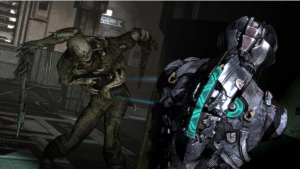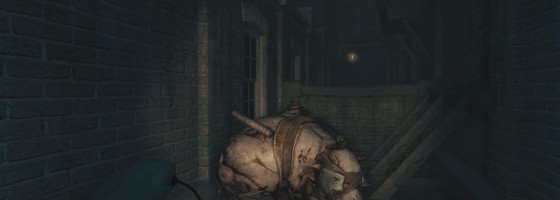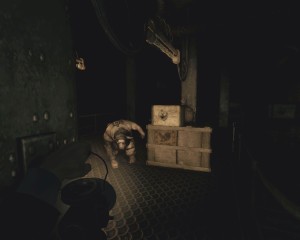The original Amnesia was another title that while I found intriguing, ultimately bored me. With the change in developers to The Chinese Room I had a feeling that a Machine for Pigs wasn’t going to be a sequel that improves things. And I was completely right and we have a game that is definitely ranked high on my list of worse games of 2013.
Sausage Works:
The Amnesia series like Outlast is all about exploration and minimal interaction with the world around you. In the first game, the player’s main source of tension came from their limited sanity and that staying in the dark would drain their sanity to the point of killing them. In terms of gameplay the player had to solve puzzles around a mysterious mansion while avoiding strange creatures and figuring out why they couldn’t remember anything.
With the sequel, The Chinese Room who developed Dear Esther went for full on storytelling at the expense of gameplay. The majority of the game was spent wandering around an estate with poorly rendered graphics trying to figure out what was going on.
The developers removed the need to manage your lantern or deal with sanity so there was never any tension to exploration. In the original game, the player did have enemies and the threat of death when being chased by them. With a Machine for Pigs, enemies only appeared in specific areas and were easily avoided.
I wasn’t a fan of Amnesia to begin with and having even less mechanics and challenges was not a good sign. The major issue is that The Chinese Room approached Amnesia strictly from a storytelling position and not from a gameplay one.
Interactive Horror:
Sticking strictly to the horror aspect, A Machine for Pigs failed to deliver for a number of reasons both repeated from the original and new ones as well. In order for horror to work in a game there has to be tension — Whether it’s from a lack of resources, danger around every corner, the unknown and so on.
A Machine for Pigs had none of that; even the puzzles lacked any real thought needed to figure out and made the game felt very plain all the way through. There was this sense that everything in the game was orchestrated that doesn’t work well when trying to scare the player. This goes back to the fact that every enemy in the game was prescript to appear at certain points and then disappear afterwards.
Anytime you have prescript situations, they are the opposite of horror, no matter how scary the situation is, what enemies are after you or anything else you can think of. Prescript situations only work one time only and there still needs to be a threat. Too much of A Machine for Pigs involves the player being completely safe from harm.
What little tension the game does manage to build up is released far too rarely when the player is under threat from one of the very few enemy encounters. The rest of the time is spent wandering around set piece to set piece.
The big issue is that a set piece can work in a horror setting, but only at the end. In the game Rule of Rose, the final chapter is basically a walking tour of the entire game space with the character talking about all the situations, imagery and more in a completely safe environment. The difference is that level was earned after all the horror, boss fights and puzzle solving where The Chinese Room just made an entire game around that concept.
The Horror Package:
Creating a good horror game is not just about jump scares, scary environments, character and enemy design, but the whole package. That’s why great horror titles are so hard to do despite either coming from the AAA or Indie market as evident by this quick post series.

Horror design only works when its the foundation of the title, not being attached to a third person shooter.
If you can get the understanding of these concepts down then it’s possible to do horror regardless of how great your game looks or the budget for it.
The horror genre is still viable with the recent Alien Isolation as a good example; it just requires a design from the ground up which can be very hard to do.
You can’t just make a FPS and then throw monsters into it and call it a horror game. You have to design the game from the very first minute as horror and then let the rest of the elements build off of that. Saving horror for last is not the way to do it and why games like Dead Space or Alan Wake felt conflicting with their tone — You’re supposed to be scared yet you’re armed to the teeth.
There is still some horror games left for me to try this year and I hope that they can do the genre justice better than the games I talked about.


